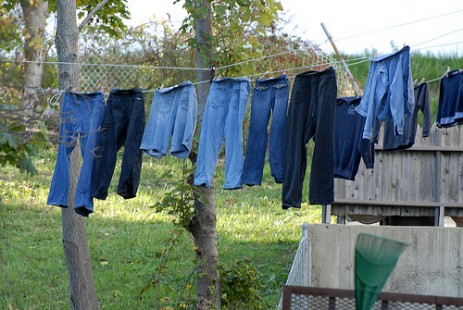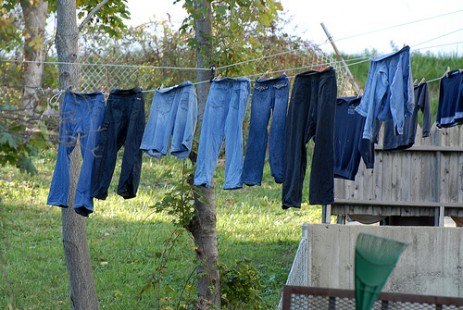 Photo: Patrick LentzDon’t look now, but your pants are wet. Really wet. A pair of jeans can use up almost 3,500 liters of water over its lifetime, the equivalent of more than 180 office water coolers. Most of that comes from the water cost of growing cotton and laundry, but some is from the manufacturing process — when they talk about different “washes,” that’s not just a marketing term. What can you do to mitigate the damage, while still covering your unmentionables in style?
Photo: Patrick LentzDon’t look now, but your pants are wet. Really wet. A pair of jeans can use up almost 3,500 liters of water over its lifetime, the equivalent of more than 180 office water coolers. Most of that comes from the water cost of growing cotton and laundry, but some is from the manufacturing process — when they talk about different “washes,” that’s not just a marketing term. What can you do to mitigate the damage, while still covering your unmentionables in style?
Buy smarter: Levi’s is introducing jeans that use less water in the manufacturing process. The average pair of jeans uses 42 liters of water for finishing; these jeans reduce that by 28 to 96 percent. It’s a start. Levi’s is also reintroducing nearly water-free “rigid” jeans styles, for those days when you want to look like a grizzled prospector.
Wash less, if you dare: You may have heard about Josh Le, kid who wore the same pair of jeans for 15 months. You may even have smelled him all the way from Canada. He found that the jeans’ bacteria levels weren’t any worse, even after more than a year, than they were after… well, more than a year, a single wash, and another two weeks of butt contact. Hardly conclusive. Also, disgusting. But you can probably get away with washing your jeans less, if you’re concerned about water usage. Le put his in the freezer. You could air yours out on a clothesline, or go for the usual refuge of laundry-dodging hippies: patchouli.
Get in someone else’s pants: To get the most mileage out of the cost of growing cotton and making pants out of it, get your jeans secondhand (you may not want to combine this with the not-washing approach, at least at first). You can also donate your old jeans, or make them into a hat or oven mitts or something.




